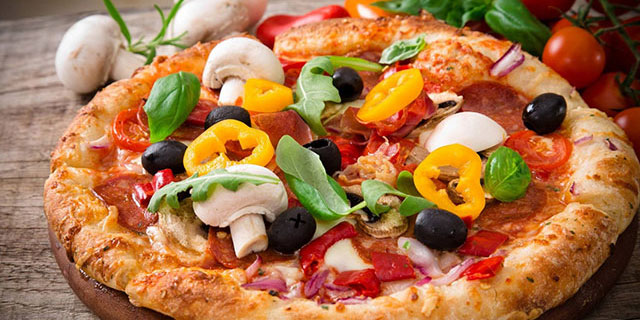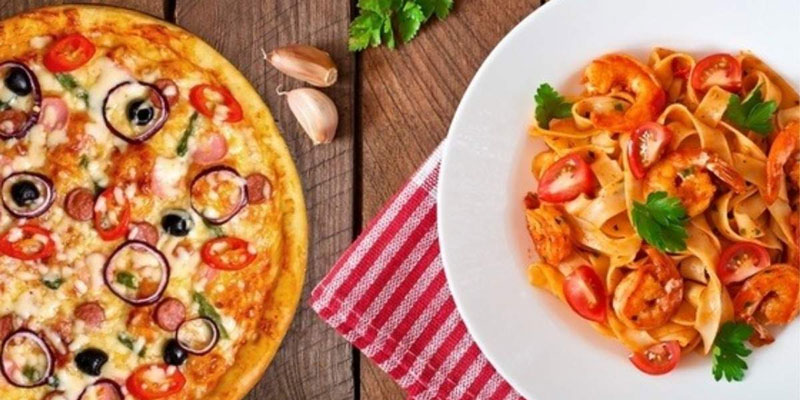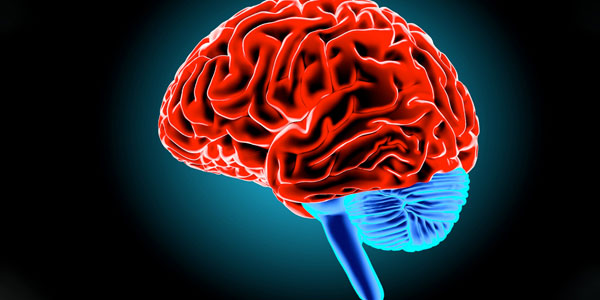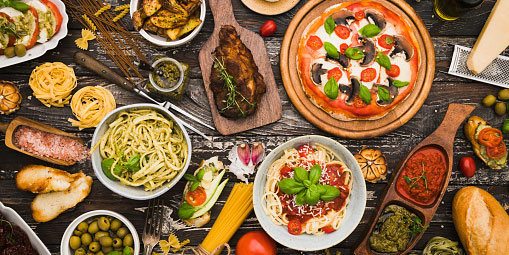
Which Is Healthier: Pasta or Pizza
Apr 07, 2022
Pizza was first introduced in Italy. It has since spread worldwide and is now an extremely well-known fast-food option. Fast food doesn't have any connection to pizza in the traditional sense. Sauce, dough along with cheese comprise the three main elements of pizza. It's extremely versatile, and you can make it vegetarian, vegan, or even with meat components.

When pasta is involved, there's a debate about the source of pasta. There is a belief in the idea that Marco Polo brought it with the rest of his journey from China on his journey as noodles. The Italians were inspired by it and invented pasta. Even those who believe that pasta was derived from Sicilia and then spread across Italy and the globe with time. Italy has a kind of hard wheat that is able to make semolina flour, which is the ideal flour for making pasta dough.
Pizza
With more than 400 calories per slice (more when you load up on cheese or pepperoni), Two or three slices could eat about half of the daily recommended daily amount of 220 calories. Slices from pizza also contain a significant amount of saturated fat that can block arteries and sodium.
Pizzas from the supermarket can be made in any way. Some traditional brands are filled with saturated fats, sodium, and. They're typically constructed with a white flour crust and come with several preservatives. It's becoming easier to locate more nutritious frozen pizzas (take the time to see how these brands stack against each other in the recent tasting test).
Making pizza from scratch is a great way to make it easier for home cooks to control the ingredients and increase their nutritional content. Incorporate whole grains (by making pizza dough with whole wheat) and add veggies (by adding favorites such as peppers, mushrooms as well as onions) and add a sprinkle of cheese. Serve with a salad or a cup of soup to create a well-balanced food.
Pasta
It is almost always way over the top when you dine at a pasta restaurant. The Olive Garden, for example, serves fettuccine Alfredo which has 1,220 calories and 1,350 milligrams of salt per serving (and this is without breadsticks and salad). The creamy sauces and the mounds of cheese could make pasta meals not healthy.
Like most things, making your own pasta is the most efficient option because you can choose the ingredients and other add-ins. While pasta is excluded from nearly every diet and has an unpopular image, selecting wholegrain kinds of pasta is in line with USDA's guidelines for dietary intake to include half of the grains you consume as whole grains. If wheat isn't your style, there are plenty of pasta alternatives that can be found in stores. The noodles are typically legumes or grains such as soy, quinoa and brown rice, and beans.
Whichever pasta you pick, your portion size must be controlled. A cup of cooked pasta is 220 calories. However, most people consume up to 3 or 4 cups during a meal. By filling smaller portions of pasta with grilled chicken, vegetables, and fresh herbs and using ingredients such as cream, cheese, and oil in a controlled manner, it's feasible to create a balanced pasta dish.
Which is Healthier: Pasta or Pizza?
Burgers require sides. Pizza is great by itself. A burger that isn't served with fries appears to be incomplete and vaguely wrong, and we can't endure things that are not complete and a bit off. A slice of pizza makes a delicious and self-contained piece of food. You may need to increase the quantity to satisfy your appetite; however, pizza is a complete meal by itself.
A popular beans pasta is Banza makes use of chickpeas instead of wheat. It's twice as the amount of protein as well as four times the fiber content of regular pasta, but with fewer carbs. When it comes to food safety, "Banza pasta is kosher, certified gluten-free and non-GMO validated," Harris-Pincus writes. The chickpea-based pasta tastes pretty similar to regular white pasta.
Two pizza slices are 924 mg of sodium, while a burger has 976 mg sodium. The sodium content recommended for the food item to be considered a healthy choice is 140 mg or lower. It is evident that pizza slices, as well as hamburgers, are loaded with sodium. Both pizzas and burgers have nothing to offer in terms of overall health for the body.
How pasta can be a part of a balanced diet: It is believed that pasta is healthy if consumed in moderate quantities and paired with other nutritious foods. However, the reverse is likely to be the case: eating a lot of pasta but a few other low-calorie, nutrient-rich foods won't benefit your waistline or health.
Conclusion
Pizza is the top choice in both restaurants and at home in terms of control of portions and toppings.





